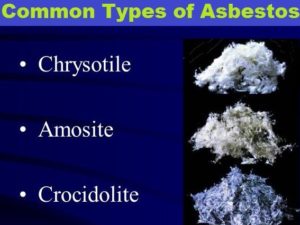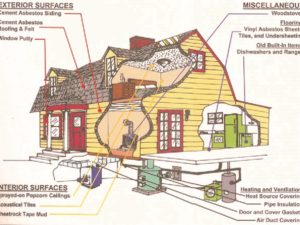
Asbestos is a dangerous material, and therefore needs to be removed using the correct and safe procedures. The type of license required to remove asbestos is dependent on what category it falls into – Class A or Class B. The level of training necessary correlates with the risk level, and therefore the most dangerous jobs require an A Class license.
What is Class A Asbestos?
Class A asbestos is also known as ‘friable asbestos’. These types of asbestos can crumble easily, and be crushed into dust in their dry state. Class A is considered to be the most dangerous type of asbestos, as it’s fibres can easily be released into the air and result in a high risk of exposure. This is because it can easily be inhaled or come in contact with any person, animal or surface in the area. The percentage of asbestos found in friable asbestos can be as high as 100%, meaning that removalists are dealing with pure asbestos.
Removal jobs that involve Class A asbestos must always be conducted under full containment, with certified air filtration devices and sealed air locks.
Friable or A Class asbestos can often be found in:
- Deteriorating Class B asbestos
- Asbestos Contaminated Dust (which could be produced from Class B products)
- Behind Floor Tiles
- Insulation
What is Class B Asbestos?
Class B asbestos is considered as ‘non-friable’. This type of asbestos is normally blended with other materials – such as cement and plastic – and then sealed. These products usually only contain about 15% asbestos, however this addition makes them stronger which is why asbestos was originally used for building purposes. It is bound tightly and cannot be easily crumbled to expose asbestos fibres and therefore is considered safe if it is maintained, undisturbed or encapsulated.
A removalist requires a Class B license to remove non-friable asbestos. As there is less chance of airborne fibres with non-friable asbestos, there is lower risk involved in the removal process. It is often common for trades people to obtain a Class B license licence so they can remove small amounts of asbestos that they may come across in renovation or building work.
Non-friable or B Class asbestos can often be found in:
- Insulation materials for pipes and furnaces, and attic insulation.
- Asbestos and cement shingles.
- Siding and roofing tiles.
- Soundproofing applications.
- Plaster and joint compounds.
- Some plastics, including paints and adhesives.
If you require the removal of asbestos, or are unsure if they job requires a Class A or Class B license, contain Jim’s Hazardous Material Removal today on 131 546 or visit www.jimshazmatremoval.com.au




